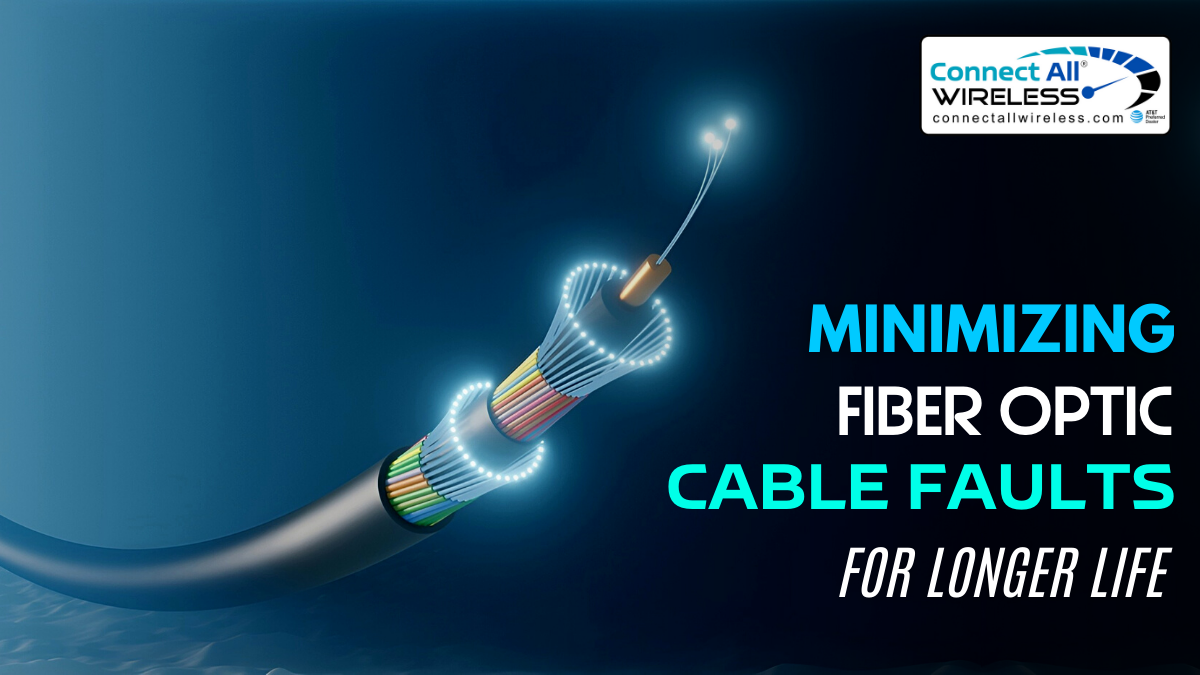Minimizing Fiber Optic Cable Faults for Longer Life
February 2, 2024In the fast-paced world of telecommunications, the backbone that supports the seamless flow of information is often hidden from plain sight – fiber optic cables. These delicate strands of glass or plastic are responsible for transmitting data at the speed of light, forming the lifeline of our interconnected society. However, like any infrastructure, fiber optic cables are susceptible to faults that can disrupt communication networks. In this blog post, we will explore the key factors contributing to fiber optic cable faults and strategies to minimize them, ensuring a longer and more reliable life for these critical components.
Understanding Fiber Optic Cable Faults
Fiber optic cables are renowned for their high bandwidth and low signal loss, making them indispensable for long-distance data transmission. However, they are not immune to faults, which can occur due to various reasons:
- Physical Damage: Fiber optic cables are often installed in challenging environments, both above and below ground. Physical stress, such as crushing, bending, or twisting, can lead to cable damage and subsequent signal loss.
- Temperature Fluctuations: Extreme temperature variations can impact the materials used in fiber optic cables, leading to expansion and contraction. Over time, this can weaken the cable structure and result in faults.
- Moisture Intrusion: Water is a common enemy of fiber optic cables. When moisture penetrates the cable, it can corrode the fibers, degrade signal quality, and even cause complete cable failure.
- Rodent and Insect Damage: Underground cables are particularly susceptible to damage from rodents and insects. Rodents may chew through the protective layers, exposing the delicate fibers to environmental elements.
- Connector and Splice Issues: Faults can also arise at connection points or splices, where two segments of fiber optic cable are joined. Poorly executed splicing or damaged connectors can introduce signal loss and compromise the overall performance of the cable.
Strategies for Minimizing Fiber Optic Cable Faults
- Proper Installation and Routing: Ensuring the correct installation and routing of fiber optic cables is paramount. Cables should be protected from physical stress, and their paths should be planned to avoid unnecessary bending or twisting.
- Protective Enclosures and Conduits: The use of protective enclosures and conduits can shield fiber optic cables from environmental factors such as moisture, temperature fluctuations, and rodent damage. These protective measures help maintain the integrity of the cables over time.
- Regular Inspection and Maintenance: Implementing a proactive inspection and maintenance schedule is crucial for identifying potential issues before they escalate. Regular checks can reveal signs of wear, damage, or degradation, allowing for timely repairs or replacements.
- Quality Connectors and Splicing: Investing in high-quality connectors and ensuring meticulous splicing practices can significantly reduce the risk of faults at connection points. Properly executed splices and connectors contribute to the overall stability and performance of the fiber optic cable network.
- Climate-Controlled Environments: Where possible, housing critical fiber optic infrastructure in climate-controlled environments can mitigate the impact of temperature fluctuations. This helps maintain the structural integrity of the cables and extends their operational life.
- Advanced Cable Monitoring Systems: Implementing advanced cable monitoring systems can provide real-time insights into the health of fiber optic cables. These systems can detect abnormalities, track performance metrics, and alert operators to potential issues, enabling prompt intervention.
Conclusion
In conclusion, safeguarding the longevity and reliability of fiber optic cables is paramount in the ever-evolving landscape of telecommunications. As we navigate the intricate web of challenges, implementing robust strategies for minimizing cable faults emerges as a necessity. From meticulous installation practices to proactive maintenance, each step plays a crucial role in ensuring the sustained performance of fiber optic networks.
By embracing advanced technologies and adhering to best practices, we pave the way for a future where Michigan Fiber Internet and similar infrastructures thrive, seamlessly connecting communities and powering the digital era. As we invest in the resilience of our fiber optic cables, we lay the foundation for a robust and enduring communication framework that withstands the tests of time, weather, and technological advancements. Michigan Fiber Internet, and by extension, the global network, stands to benefit from these concerted efforts, fostering a connected world that relies on the strength and durability of its information superhighways.


